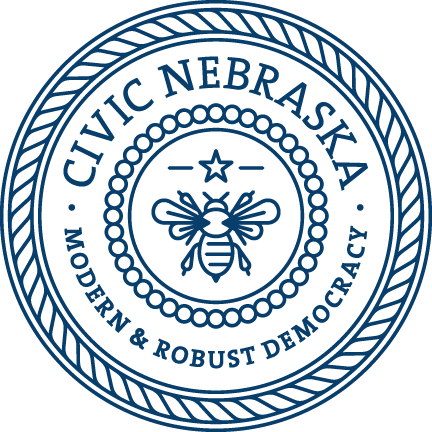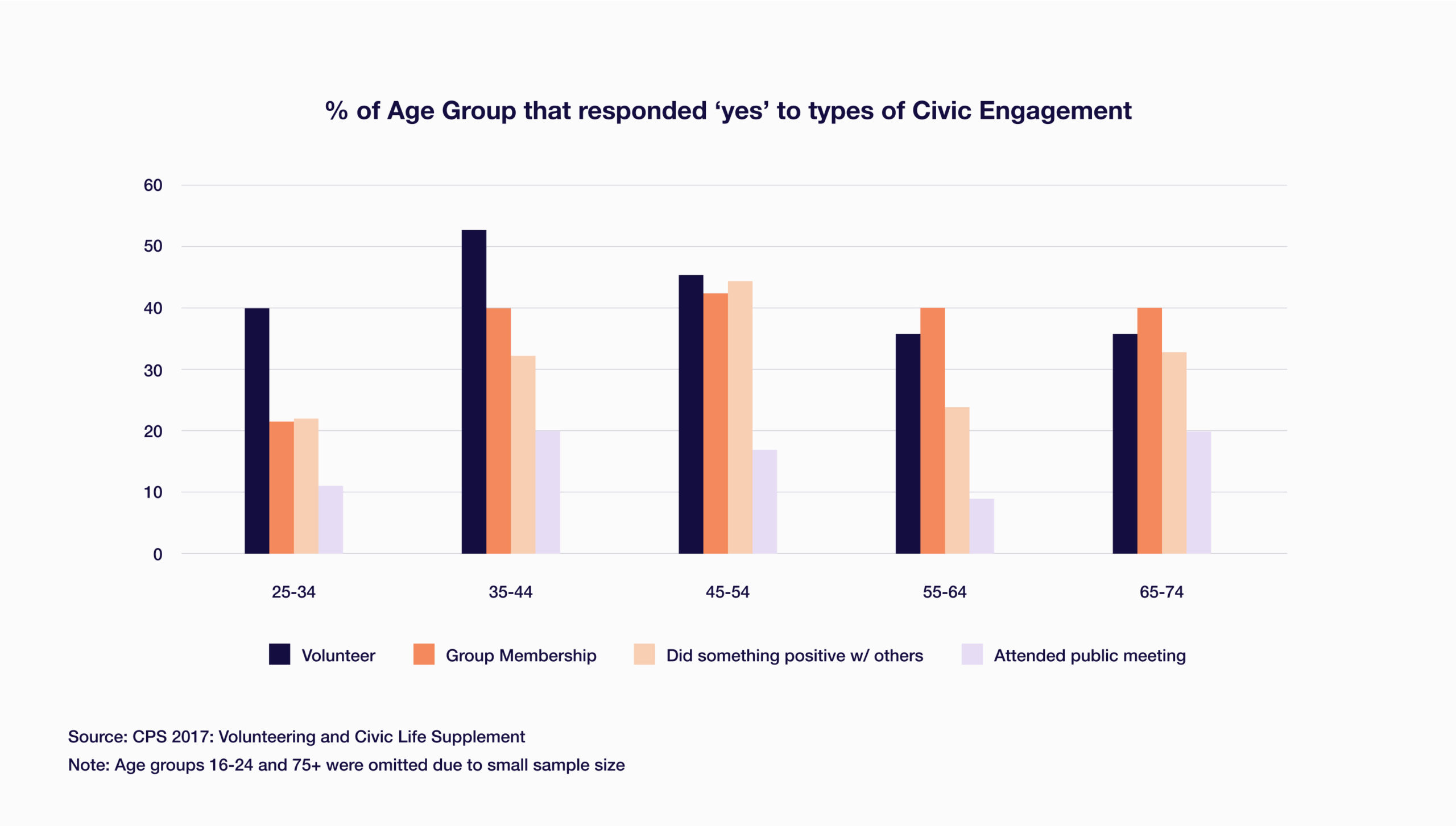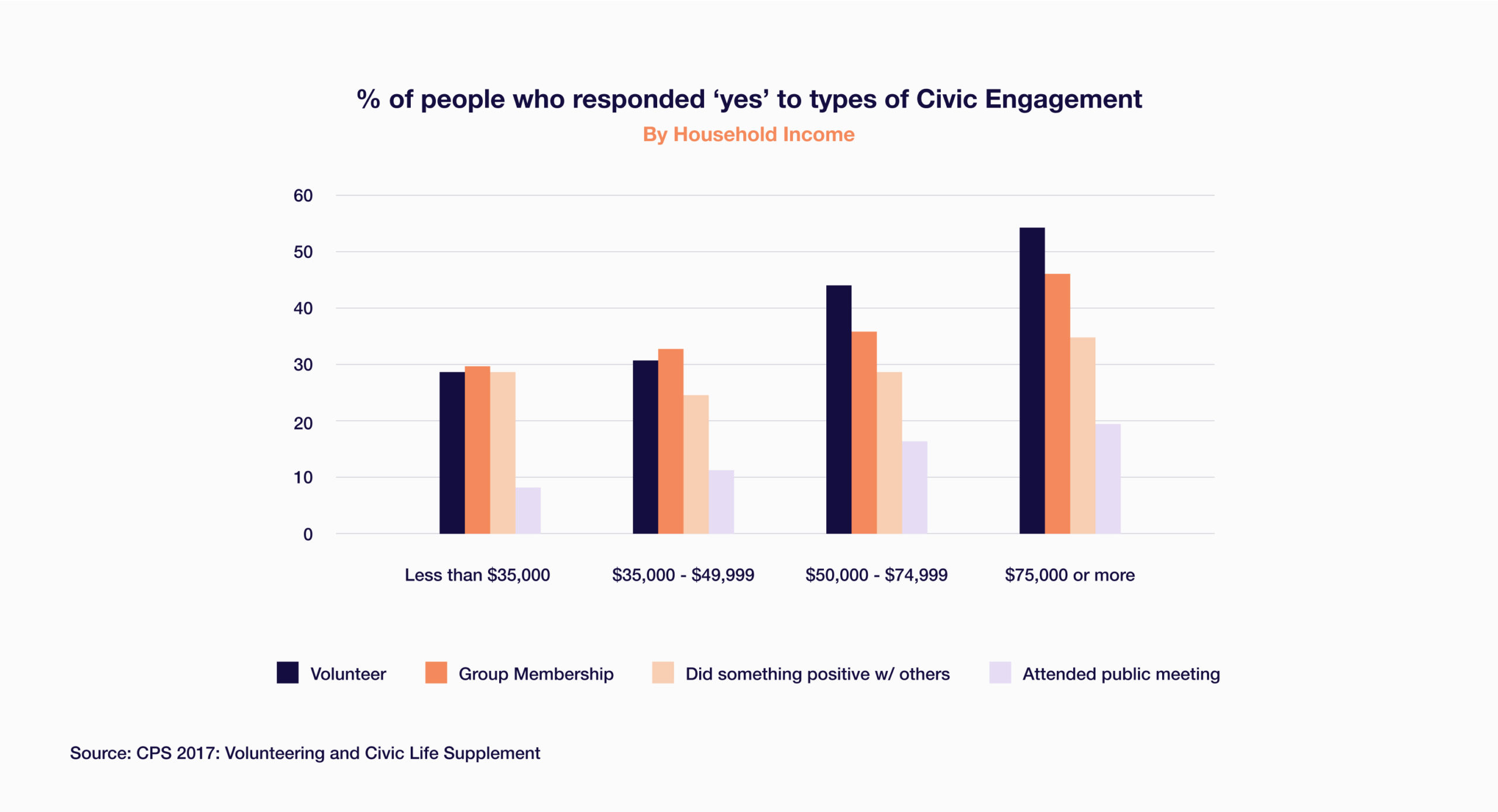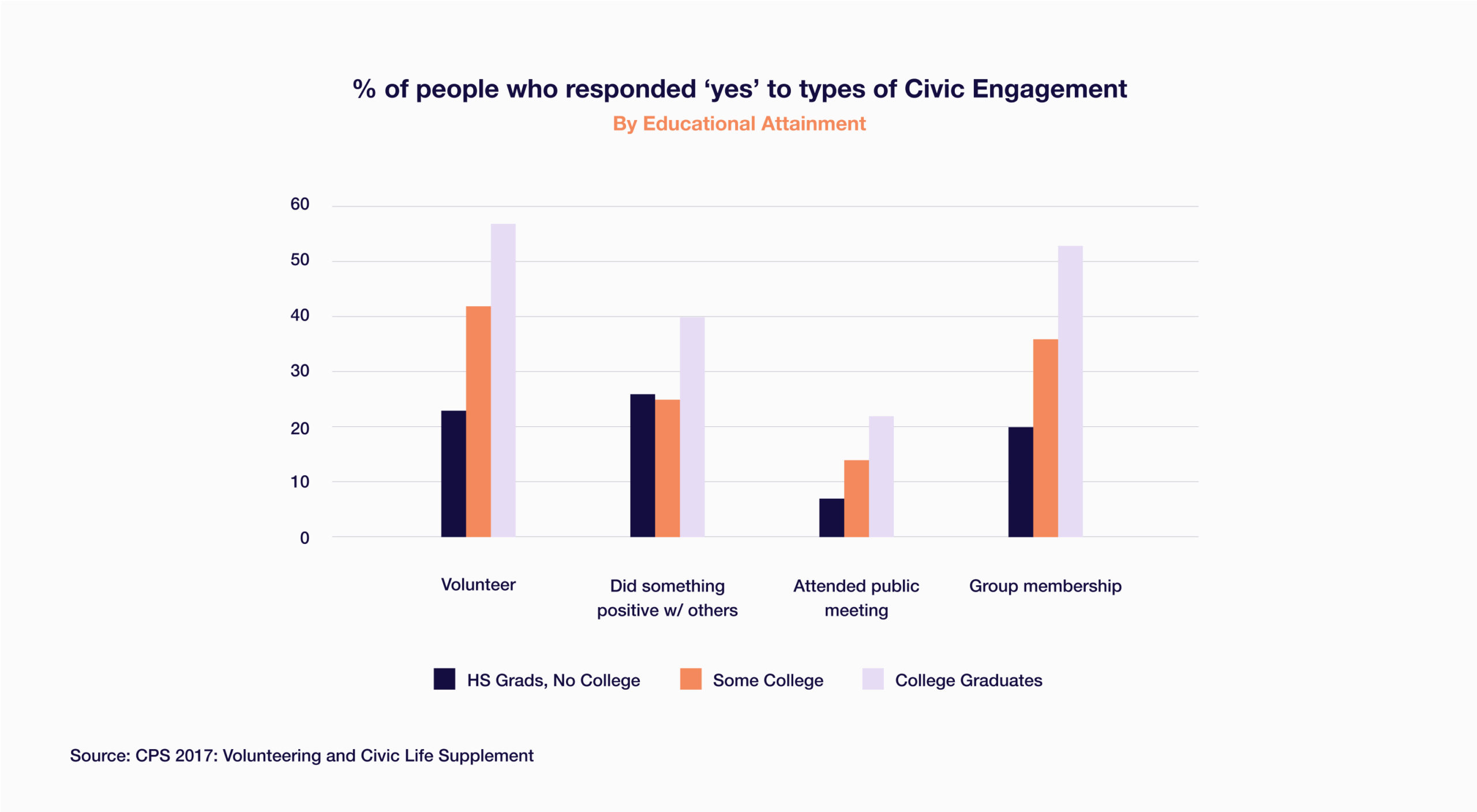Community Engagement
When community engagement activities are strong it indicates strong ownership within a community, and suggests collective care and problem solving.
Through community engagement, residents get to know their community and its needs, share their own gifts, and connect with others to pursue common interests. Nebraskans tend to do very well relative to the nation in community engagement. Most of these metrics increased from 2013, with the notable exception of group membership, which declined across the nation.
Indicators of community engagement include volunteering, charitable giving, working with neighbors, attending public meetings, group membership and group leadership.
Overall Civic Engagement Highlights
- Increase in volunteering: In 2017, about 40% of Nebraskans were estimated to have volunteered. Of those who volunteered, about 26% said they volunteered at least once a week with the remainder volunteering at least occasionally.
- Increase in working together with neighbors: 29.5% of respondents in Nebraska reported getting together with neighbors to do something positive, the fifth highest percentage in the nation.
- Increase in public meeting attendance: increased slightly from 2013 to 2017, following the trend of the nation, but still only 13.8% of respondents attended a public meeting. Non-metro residents were slightly more likely to attend a public meeting than metro residents.
- Decline in group membership: Despite increases in other activities, group membership decreased markedly both in Nebraska and across the country. Declining group membership is a well-documented, decades long trend that continues to challenge civic groups.
Civic Engagement by Age
35 to 54 year olds reported being the most civically active among the age groups. Young people volunteer at rates similar to other age groups, though group membership is starkly lower among 25-34 year olds than among older generations, with just 22% of 25-34 year olds belonging to any groups, organizations, or associations.
Civic Engagement by Household Income
By income, levels of participation in volunteering and group membership differed the most between the highest and lowest income groups. The rates of doing something positive for the community with others and attending a public meeting, were significantly more consistent across income levels.
Civic Engagement by Educational Attainment
Higher levels educational attainment also seemed to correlate to more activity in civic engagement. It’s worth noting, however, that more respondents with a high school diploma (no college) responded that they got together with others to do something positive for the community (26.3%) than responded that they volunteered (22.6%). This differs from the 57.1% of college graduates who responded that they volunteered versus 39.8% who worked with others to do something positive for the community.
Volunteering and group membership among those without a college degree is significantly lower than those with a college degree. College graduates were also more than twice as likely to attend a public meeting than those with a high school diploma or less education.





